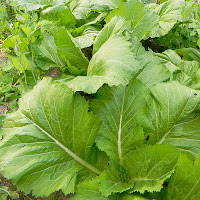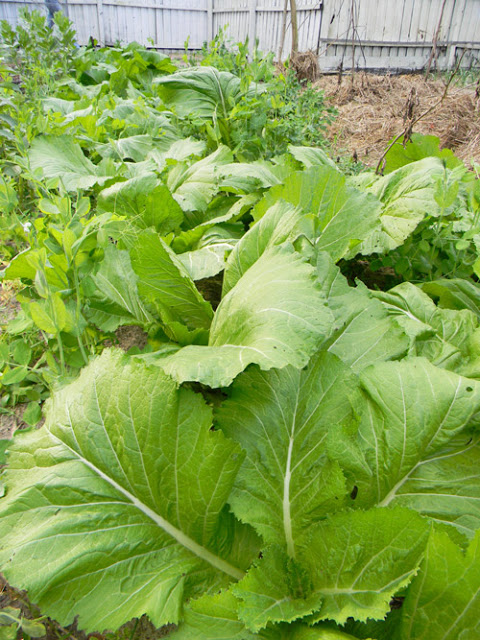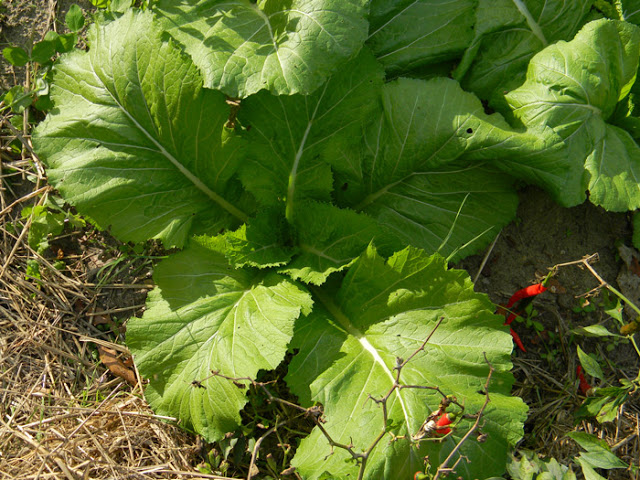 Growing mustard in Florida is easy and very satisfying.
Growing mustard in Florida is easy and very satisfying.
Mustard greens are my new favorite potherb. This plant is easy to grow and is remarkably healthy for you, even containing anti-cancer compounds. Though it’s not as cold-hardy as kale or collards, mustard will stand quite a bit of frost before dying. Mine have survived the mid-20s without damage. In fact, if you want success, you cannot plant these during the warm part of the year. If you do, the plants will rapidly bolt and peter out. As temperatures rise, they get all crazy and overwhelmed with the desire to make babies. Here in North Florida, I put my mustard in around November, then harvest leaves through the winter. Boiled, mustard has a texture and flavor we prefer to its cousin collards. Stir-fried, it has a spicy bitterness the kids don’t really like – and I agree with the kids.
From seed, mustard germinates quickly and you can start harvesting leaves in about a month. Depending on the variety, you can get purple leaves… curly leaves… or even huge leaves. I cut off leaves as I want them and the plant continually produces new ones. I can barely keep up with the 24 or so plants I have going right now.
Another benefit of mustard: mustard can kill nematodes when used as a green manure. I plant on hacking some of my mustard viciously into the soil as soon as it starts bolting in the spring, then planting something else in the bed. DIE NEMATODES! DIE!
Of course, if you let the plant go to seed, you can make your own delicious mustard from the resulting seeds. I might save some to try that as well… because in the econopocalypse, we might really start missing condiments. Especially as we’re forced to eat rats and gnaw on old boots for sustenance.
If you haven’t done it before, set aside some space for mustard this year… it’s well-worth growing.
For more information on growing survival plants in Florida check out my book Florida Survival Gardening
SPUDOMETER RATING:
3 Spuds!
Name: Mustard
Latin Name: Brassica juncea
Type: Cool-season annual
Nitrogen Fixer: No
Medicinal: Yes
Cold-hardy: Yes
Exposure: Full sun
Part Used: Leaves, seed
Propagation: Seed
Taste: Very good
Method of preparation: Leaves steamed or boiled, leaves raw in salads, seeds for condiment.
Storability: Decent. Blanch and freeze.
Ease of growing: Easy
Nutrition: Excellent
Recognizability: Low
Availability: High





6 comments
That's great to know. I practically can't stop these things from growing here in Central FL. I made the mistake of mislabeling a bunch of seeds, since they look just like broccoli seeds, so I ended up with way too many.
I note that when you boil (or I suppose steam) them, you end up with something that has a fairly high protein caloric ratio: http://nutritiondata.self.com/facts/vegetables-and-vegetable-products/2490/2
Now… how to find a way to get kids to eat them, that's another story.
I tried telling the kids they were ice cream. No luck.
Actually, they will happily eat them boiled… but not stir-fried. Though at least one of them claim they like collards more than mustard. I found that interesting, since the mustard has a milder flavor.
If I could find a way to cook them and then dry them into a cracker so you can spread cream cheese on them, that might do it. I suspect that's a tall order. Other than that, my kids seem to vastly prefer fresh veggies to cooked. Which, of course rules out the mustard greens due to the old roof-of-the-mouth-burning thing.
But wifey and I like them steamed along with some onions and garlic and served as a side dish to eggs. Very much like the traditional Jamaican breakfast with scrambled eggs and callaloo.
You need some sort of a compression machine that will flatten and fry greenery. Feed kale/mustard/collards/etc into one end, then it spits toasted green chips out the other.
[…] The Survival Gardener: Mustard […]
[…] Seven years ago, I wrote in my survival plant profile on mustard: […]
Comments are closed.